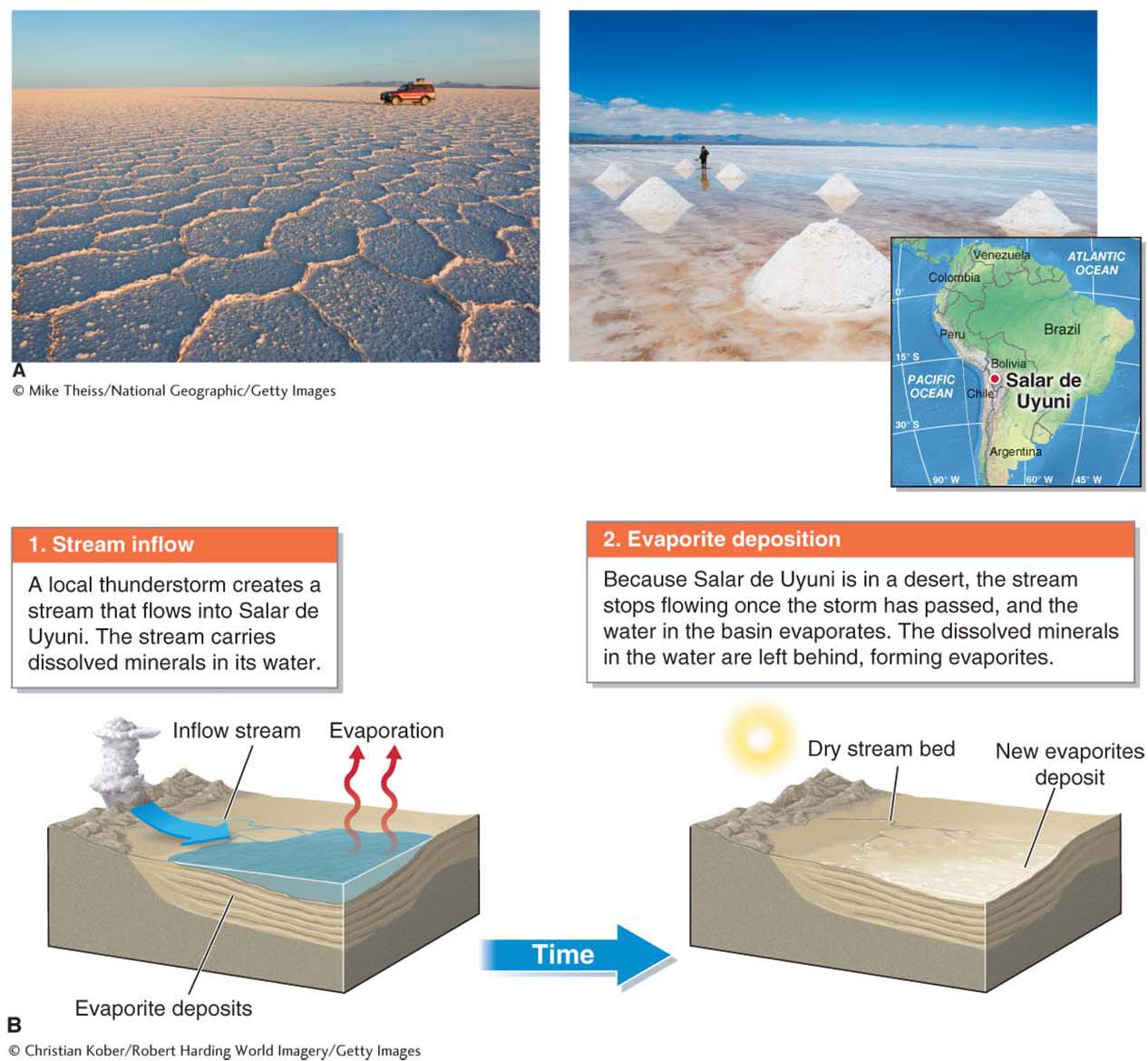
Figure 13.15
Salar de Uyuni. (A) Salar de Uyuni, in Bolivia, is the largest exposed evaporite deposit in the world, measuring 200 km (124 mi) across and some 10,500 km2 (4,000 mi2) in area. The polygonal cracks (left photo) in the sediments were formed by repeated swelling and shrinking due to wetting and drying. Lithium, borax, and rock salt (or table salt) are some of the minerals mined and processed here (right photo). The deposit is estimated to contain 10 billion tons of salt as well as 42% of the world’s lithium supply. (B) Evaporites form in arid environments as a shallow lake basin repeatedly fills with water, which then evaporates. Every time the basin floods and evaporates, a thin layer of evaporites is left behind. Through time, these layers accumulate into extensive deposits.(A. © Mike Theiss/National Geographic/Getty Images; B. © Christian Kober/Robert Harding World Imagery/Getty Images)